Most headphones frequently experience sound leakage, commonly referred to as sound bleeding. Most likely, you’ve encountered a stranger in an area with loud music you can hear from a distance. The music is so loud that you find yourself suddenly singing along with the words, but let’s face it, most of the time, they are obnoxious.
It might be challenging to choose headphones that won’t leak. Let’s be honest: if the person is seated directly in front of you, you can’t stop the sound from spreading. However, if you pick the appropriate headphones, you may be able to prevent it from happening from a few feet away.
Anyone can hunt for headphones that don’t leak sound for various reasons. It may be to preserve privacy when listening to music in public, to stop sound bleeding when recording, or to enjoy your music without bothering others.
Yes, you would not want everyone in the area to know how you are feeling at the moment. Swipe left if you don’t care about how many people are irritated. Let’s find the best headphones that don’t leak sound without wasting time.
Finding headphones that don’t leak sound might be complex, no matter your motivation. Furthermore, there isn’t a precise technical specification that states “zero sound leakage”! You would typically need to test the headphones on your own.
Headphones retain users’ privacy while enhancing their listening experience thanks to several combinations of elements. Specific ideas might indeed be difficult to understand, especially for new purchasers. A decent set of closed-back headphones that can keep the sound inside the ear cups and stop any sound leaking is required for high-quality music.
I’m here to provide the top best headphones for not leaking sound. Let’s now begin the conversation.
The Buying Guide for Best Headphones that don’t leak Sound:
Before deciding to purchase headphones with an excellent sound leaking feature, several pieces of information must be verified. In the next section, I’ll talk about them. So, read it through to get the specifics.
The form, fit, and design of a pair of headphones affect how well they can block background noise while maintaining the privacy of your listening experience. Many different types of headphones are available, and some are more effective at containing sound leaking than others. Depending on the form factor and earcup shape, there are two different earbuds and four different types of headphones.
Various earbud types
Plain earbuds: Place them on your ears. They are less costly and more prevalent. The ear tips of in-ear monitors (IEMs) are longer and extend further within the ear.
- Various headphone designs based on fit and form:
- Over-ear headphones have earcups that enclose the wearer’s ears entirely.
- With on-ear headphones, the earcups just lay on the wearer’s ears.
Since its speakers fit closely and create a seal on your ear canal, IEMs are often the best option for earbuds that don’t leak sound. The sound barriers on closed-back over-ear headphones’ ear cups provide them an advantage over other types of headphones.
Additionally, deciding between IEMs or over-ear headphones depends on your tastes. IEMs can offer convenience and portability. On the other hand, because of their more significant drivers, closed-back over-ear headphones can deliver higher sound quality.
Noise isolation
Noise isolation sometimes referred to as passive noise cancellation, is the capacity of the headphones to suppress outside noise by combining several physical design components. This is similar to covering your ears with your hands to block out noise from outside. Many believe that ANC-equipped headphones are always superior since they are more costly and contain more sophisticated technology.
ANC is an excellent choice for lowering ambient noise but isn’t particularly good at stopping sound leakage. There is thus no assurance that others won’t be able to hear what is playing in your headphones even though you won’t be able to hear anything around you.
Because of this, passive noise cancellation is more advised than active noise cancellation if all you need are headphones that don’t leak sound. Effective passive noise cancellation inhibits sound from the headphones from coming out as well as from coming in from outside.
Padding quality
Your headphones’ padding, in addition to the ear cup enclosure, has an impact on sound leakage. After all, the padding on the ear cups of the headphones is what physically encircles and shields your ears. The ear tips for your IEMs are the same. The information, in their case, is the ones you insert into your ear canal.
As a result, the form, design, and materials of your padding significantly impact the sound leaking from your headphones. Additionally, if you prefer noise isolation, you can end up with headphones that eventually feel warm to the touch.
This might be a problem with breathability, which is the degree to which the earcups maintain ventilation despite their design. Again, the level of padding will determine this. After several hours of listening, body heat can build up and be retained and absorbed by memory foam.
Because of this, you shouldn’t simply choose any headphones with memory foam cushioning; you also need to consider the material that covers them. Instead, try to find ones that mitigate the loss of breathability while providing an excellent moldable complement to memory foam. Given this, choosing headphones with velour or memory foam ear cushions covered in fabric is the best option.
Comfort and fit
Nothing is worse than having to endure uncomfortable clothing for an extended time. Apart from being annoying, uncomfortable headphones can significantly ruin your music enjoyment. Because of this, comfort should always come first when choosing any headphones, especially those that don’t leak sound.
However, fit determines how comfortably a set of headphones fits over your ears. Fit is crucial for noise isolation and keeping headphones in place. The isolation improves with a better fit. The fit and comfort of headphones depend on several factors. While trying out headphones before buying them is ideal, this isn’t always practical, especially if you’re shopping online.
Weight: and tactile feeling
Weight is a relative concept. Varying people perceive a given set of headphones’ accurate weight while worn. The usual guideline is always to attempt to choose headphones that weigh less than 0.55 lbs. Tactile feeling describes how your skin feels and responds when your headphones come in touch with it. The finest materials for this are said to be velour, genuine leather, and synthetic leather.
Sound Quality
Open-back headphones are consistently mentioned as the preferred option among audiophiles when discussing sound quality. This is so that a more realistic and expansive sound image may be produced. This type permits air to move more freely.
However, open-back headphones should be avoided when seeking headphones that don’t leak sound, as was previously indicated. The sound quality of most closed-back headphones is, unfortunately, inferior to that of their open-back equivalents.
Therefore, you should have realistic expectations for a reasonable rate if you’re seeking headphones that don’t leak any sound. In essence, the enclosure of closed-back headphones amplifies and booms low frequencies. And although bass enthusiasts might enjoy that, it frequently results in too much bass, which quiets the mids and highs.
Also Read: Best Headphones for Sensitive Ears
Durability
Test the quality of the cable and connector before you purchase a wired headset. In the event of a wireless device, look at the battery life. However, you must assess the durability of the construction materials used in both forms.
Check for Warranty
The more warranties or guarantees a pair of headphones offers, the less danger there is in your purchase. Therefore, consider the deposit length or security that comes with a product. Then select the option that provides enough.
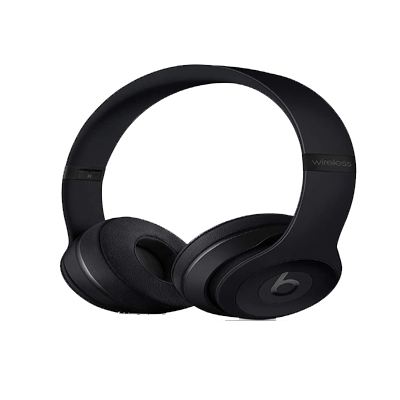
Pros
Cons
Despite being a dated pair of headphones, the Beats Solo3 Wireless still functions admirably with iPhones because of the W1 chip integration and AAC compatibility. Fans of Siri might want to choose the Beats Solo Pro noise-canceling on-ear headphones, but other than those few features, the Beats Solo3 Wireless still works great today.
In the past, Beats, a division of Apple, has influenced the style of consumer audio devices. Even though the Beats Solo3 Wireless is a few years old, the design would look great in the company’s current portfolio.
The Solo3 will serve you well if you don’t require the newest and best features, thanks to its W1 chip integration, quick charging, and extended battery life. It’s safe to say that Apple made a wise decision by avoiding a drastic exterior redesign with the Beats Solo 3 Wireless.
The Beats Solo is the model we see out and about the most these days, even if Beats headphones continue to be among the most recognizable in the world. Before, all Beats headphones featured bold, blazing red “B” symbols; today, they all have color-matched logos to the shade you choose.
The Sennheiser Momentum On-ear and Bose pairs appear more sophisticated, although recent iterations have attempted to make the Beats Solo design more appealing to a larger demographic. The Beats Solo 3 Wireless excels at wireless technology, with class-leading battery life, highly reliable Bluetooth, and a decent range.
Their bass response will undoubtedly win over the crowd as well. The Solo 3 Wireless delivers heavy thuds without producing a lot of boominess, which is what a Beats headset should do—not that it’s designed to be neutral or accurate. The selection of colors is also fantastic, ranging from younger-skewing bolder hues to simple matte finishes that look fine on anyone’s head.
Additionally, they work a little differently with iOS devices than prior Bluetooth headphones, which is a nice adjustment, primarily since iPhones don’t support NFC connection. However, other components aren’t as vital. Some trivial concerns include using cheap leatherette in a costly pair of headphones.
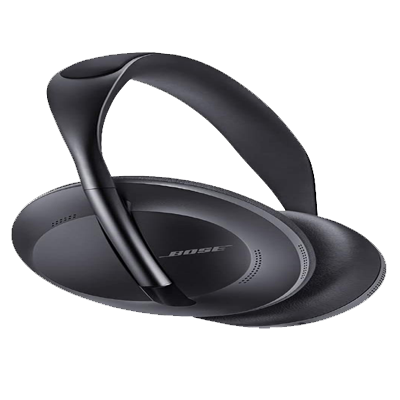
Pros
Cons
The hands-free voice assistant functionality, excellent audio quality, and best adjustable active noise cancellation available are all features of the wireless Bose Noise Cancelling Headphones 700. With its QuietComfort line of headphones, Bose has dominated the active noise cancellation (ANC) industry for years.
The Massachusetts-based firm has consistently appeared to be one step ahead of the competition and effectively wrote the book on noise canceling. The sleek, simple Noise Cancelling Headphones 700, which come in black or silver, has an elegant headband that connects the plushly padded circumaural (over-ear) earcups.
Even during extended listening sessions, the fit is pretty comfortable, and even without turning on ANC, the faux-leather earpads effectively filter out a lot of background noise. The headband and earcups offer a stylish eggshell-like texture on their exterior surfaces.
A touch-sensitive control pad, power/pairing buttons, a voice assistant button, and a status LED are all located on the right earcup’s exterior surface. Music may be played and paused by double-tapping the control pad.
The volume can be changed by swiping your finger up or down, and songs can be skipped by moving it forward or backward. You may configure this action to allow or deactivate the wake word for voice assistants in place of the battery life prompt when you tap and hold on to the panel.
The Bose Music app (available for iOS and Android) guides you through the steps of pairing, identifying, and choosing the music services you wish to use with the app. Bose overcomes a problem with wireless ANC headphones: there isn’t much difference in audio quality across the noise-canceling settings.
With exceptional mic clarity, improved voice assistant capability, and more granular ANC settings, the Bose Noise Cancelling Headphones 700 live up to the standards set by the QuietComfort series. They are pricey but well worth it, and their top-notch noise-canceling easily earns them our Editor’s Choice.
Also Read: Best Headphones for Rock Music
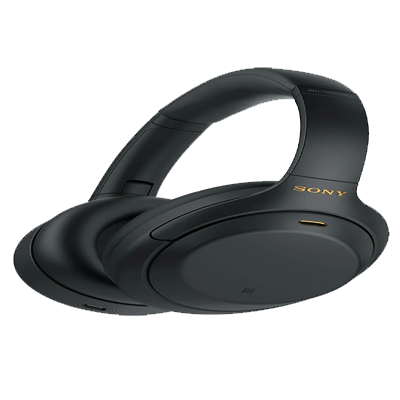
Pros
Cons
The Sony WH-1000XM4 wireless headphones have excellent sound quality, outstanding noise cancellation, and a lightweight, comfortable design. Although they don’t seem all that different from their predecessors, the WH-1000XM4 is the most incredible set of headphones thanks to several additional capabilities, including multipoint connection, DSEE Extreme upscaling, conversational awareness, and auto-play/pause utilizing a built-in sensor.
The Sony WH-1000XM4 supports the LDAC codec, which can deliver data at a bandwidth of up to 990 kbps, and Sony’s 360 Reality Audio format, which provides spatial audio on stereo headphones.
We strongly suggest the Sony WH-1000XM4 as the best headphones and over-ear headphones for most individuals, especially travelers or those with lengthy commutes, due to its incredibly comfortable fit and excellent noise cancellation.
Although the Sony WH-100XM4 headphones have several new parts, there isn’t much that sets them out from their predecessors in terms of appearance. If you put them side by side, it would not be easy to differentiate the 1000XM3 from the 1000XM4.
You’re mostly looking at a high-quality plastic construction with soft pleather cushioning regarding materials. The ultimate result is a product that feels pretty sturdy and is quite pleasant to wear for a long time.
When the Sony WH-1000XM3 was first introduced, it had many features, creative control methods, and clever ways to use its noise-canceling capabilities. These innovative noise-canceling modes allow the WH-1000XM4 headphones to use geo-location access to learn your location with your consent.
When necessary, it offers a wide soundstage and detail that may cut through a strong bass performance. It has a warm and balanced sound. Sony’s Dual Noise Sensor technology, which uses two microphones in each earcup to capture sound and analyze it with the QN1 noise canceling processor, is used for noise cancellation. It’s really remarkable that it stayed the same despite adding a tonne of additional features.
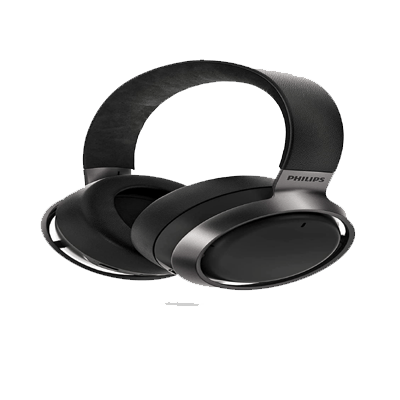
Pros
Cons
If you want a slice of high-grade comfort with advanced audio quality, the Philips Fidelio L3 gives one of the most remarkable over-ear experiences of any headphones introduced in 2021.
However, the Fidelio L3 lacks class-leading active noise cancellation (ANC), so if you want to remove almost all of the outside world’s ambient noise, seek elsewhere, and the app has some difficulties in our experience.
Still, if you want sharp high-end, airy mid-range, and tight low-end sound quality, the Fidelio L3 produces an incredibly articulate soundstage – and that, above all, is the central selling point and why these cans are so simple to recommend.
When you take the headphones out of the package, you’ll first notice the supplied travel case, a trapezoid-shaped zip-up container with a Philips branded loop on the upper side. It’s larger than other carry cases, such as one with Bose’s NC 700 Headphones, but its reinforced panels and plush internal lining will keep the Fidelio L3 safe.
The headphones themselves are wonderfully understated: there are Philips logos around the connection point between the earcups and the headband, but they’re not huge or conspicuous, and the debossed ‘Fidelio L3’ on the headband is only visible if the light hits it just so. The big aperture of the earcups contributes significantly to comfort.
Even huge ears won’t get chapped with them. The velvety memory-foam cushions are encased in silky Muirhead leather. We’ve had the L3 on our heads for days now after about a week of use, and the comfort gets better with time because of the well-thought-out materials and design. The fit is also designed so that the headband rests relatively vertically over the head, preventing it from moving, which can cause sound profile changes in many rival headphones.
The immersive quality you can get with over-ears versus less snugly fitting in-ears is quite remarkable, and because these headphones lie like a cloud on your head, it’s even more impressive. Finally, there’s the question of endurance, which comes at 32 hours per charge. That’s four full working days spent engrossed in ANC. And, given how comfy these headphones are, you might be able to wear them for that long.
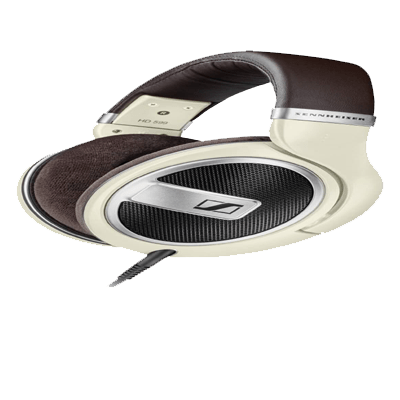
Pros
Cons
For casual listening at home, the Sennheiser HD 599 is difficult to top for lengthy sessions. Its open-back design provides little seclusion and limits where it may be used. The build quality is decent for the budget. With a lot of plastic, however, the replaceable cords extend the life of the headset.
It used to be difficult to find headphones that added Bass to music without shaking your head, but not anymore. With a foot in both the audiophile and broad consumer camps, the HD 599 aims to delight a wide range of listeners, from headphones to music fans.
The build quality appears acceptable, with a brown vinyl-covered foam headband and notched sizing adjustments. The HD 599 is mainly comprised of plastic and features detachable velour ear cushions with 70mm x 45mm ear clearance. These ear cushions seem like a compromise between stiffer and rougher options.
You should use the Sennheiser HD 599 in a peaceful area of your home for a hassle-free experience. Because of the long wire, you may connect it to your computer or home listening setup and rest across the room. If you require seclusion, you should pick closed-back headphones. Open-back headphones are the ultimate transparency: you hear your surroundings, and everyone else hears your music.
The vocals and keys come through well when listening to The Aluminum Group’s The Rock. The kick drum has a reasonable level of loudness. The bass guitar might be louder, particularly on the lowest notes. It includes various extras like changeable cables and ear padding and does an excellent job of feeling incredibly comfy.
Those of us who dislike “V-shaped” frequency responses yet want a little more Bass and midrange focus than studio headphones provide will generally love the HD 599’s sound. This is true of all open-back headphones, but it is worth noting because the HD 599 is already a niche product. Except for Beats-style headphones or anyone looking for relatively neutral headphones, I would not hesitate to suggest the HD 599 to listeners of pop music.
Also Read: Best Ski Helmet Headphones
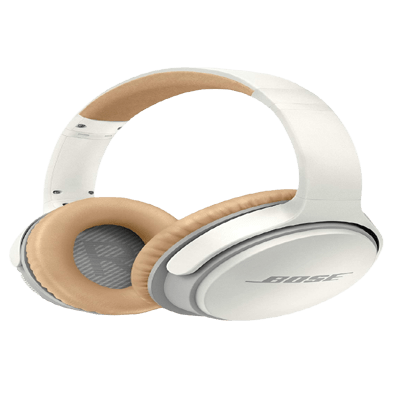
Pros
Cons
The Bose SoundLink Around-Ear II Bluetooth headphones are a lightweight, highly comfortable set with high-quality sound and a hefty price. When it comes to noise-canceling headphones, Bose is unbeatable, but the firm has yet to extend the unprecedented success of its QuietComfort series into the wireless headphone sphere.
The Bose SoundLink Around-Ear II is the follow-up to last year’s SoundLink On-Ear headphone pair, costing $279.95. Bose, as usual, nails the ease-of-use element while producing an extremely lightweight, comfortable fit.
Audio performance is likewise quite good, but purists may find it a little too sculpted. The SoundLink AE II is designed in the traditional Bose style, with matte surfaces, no simple embellishments, and the Bose logo embossed on each earcup.
The headphones are incredibly comfy, featuring velvety leather earpads and a cushioned foam underside to the headband, typical of Bose’s subtle design. The pair’s light-as-a-feather feel contributes to its comfort, and the lightweight earcups manage to block out a significant amount of room noise passively.
The headband is precisely adjustable to ensure a perfect fit, and the pair folds down flat for easy stowing—it comes with a fragile, zip-up case. The headband adjusts precisely to provide a proper fit, and the team folds flat for convenient storage—it comes with a tiny, zip-up bag. The headphones come in black or white.
A switch on the earcup’s exterior face controls the power. Dual microphones on each earcup improve call clarity. The headphones also include multipoint capabilities, allowing you to connect with both a tablet and a smartphone—for example, to listen to music on one while taking calls on the other.
A USB charging cable (which attaches to the right ear) and an audio cable for wired, passive listening are also included by Bose (which connects to the left). Bose promises that a 15-minute charge will give you around two hours of battery life, which is fantastic.
Complete control for a dead battery should take around two hours and provide up to 15 hours of playing, although your results may vary depending on the volume levels you listen at. The Bass does not distort at high, unwise listening levels, and at moderate volumes, the DSP manages the bass levels so that the lows always sound pretty powerful.
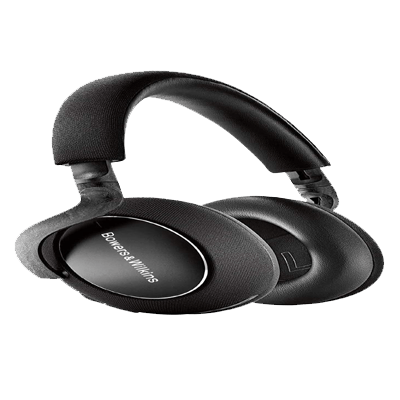
Pros
Cons
The high-end Bowers & Wilkins Px7 S2 headphones have an excellent style, feel, and sound, which makes up for their average noise-canceling performance. They give a superb audio experience perfect for classical and jazz music, with deep lows and a natural tone.
Additionally, its high-end design is incredibly comfy and oozes elegance. These additional components, together with the metal earcups’ semi-matte exterior, give the over-ears a chic, contemporary appearance. Even during extended listening periods, the fit is quite comfortable.
It functions well, is simple to use, and offers many helpful features beyond straightforward firmware updates. For instance, you may switch between various components, like the Wear Sensor. The brand-new Bowers & Wilkins Px7 S2 noise-canceling headphones are a great alternative to premium wireless headphones by well-known companies like Sony and Bose.
The PX7 headphones, a follow-up to one of the most significant wireless cans in the business, have been among the best on the market since their release. They boast an eye-catching appearance, fantastic sound, superior noise cancellation, and excellent battery life.
The Px7 S2 headphones are made of lightweight material and include soft, memory foam stuffed ear cushions. I used them for a week without experiencing any soreness or exhaustion while wearing them for hours each day.
Once more, the product’s tactile button controls outperformed the touch-sensitive designs of its comparably priced competitors in terms of convenience and dependability.PX headphones deliver a finely crafted ensemble of leather, metal, and fabric, setting new benchmarks for style and tactility.
Every pair of high-end headphones that cost less than $500, including those from Beats, Bose, JBL, and Sony, were rendered dull by the materials. The Px7 S2’s 30-hour maximum battery life is superb and comparable to Sony’s best noise-canceling headphones.
With just 20 hours of music between charges, high-profile rivals like the AirPods Max and the Bose Noise Cancelling Headphones 700 fall short. The headphones come with a sturdy carrying bag and a nice pocket for the cords.

Pros
Cons
For the last 130 years, Philips has been among the most prominent electronics businesses in the world. With a focus on technology, they develop for people with the conviction that there is always a way to improve life.
Their Hybrid Active Noise Canceling Headphones are designed to give a customized audio experience, with memory foam ear cups and touch controls that form an almost perfect seal over the ear to block out outside noise. Users merely cover the right ear, and the external mic will magnify the required ambient noise, making this a safer choice for commuters.
Each ear cup has an internal and external microphone that work together to provide what Philips calls an Awareness Mode. Powerful 40mm drivers with a frequency range of 20 – 40,000 Hz and heart-pounding bass, clear mids, and polished highs contribute to outstanding sound quality.
The Philips headphones app, which enables complete customization over the EQ settings of the headphones, significantly aids in the balanced sound quality that our team noted when using AAC lossless streaming.
Last but not least are the small extra details Philips included, including Google Fast Connect integration, which enables your Android device to quickly identify and pair the headphones when they are brought close. Long listening periods are made possible by the headband and padded earcup cushions.
Touch controls are available for calls and music, while buttons on the right ear cup regulate ANC. Flattening the ear cups makes storing simple. It’s excellent if you want to hear notifications from your phone while listening to podcasts on your laptop because calls are clear, and you can connect to two Bluetooth devices simultaneously.
Long listening periods are made possible by the headband and the cushioned earcup cushions. Touch controls are available for calls and music, while buttons on the right ear cup regulate ANC. Flattening the ear cups makes storing simple.
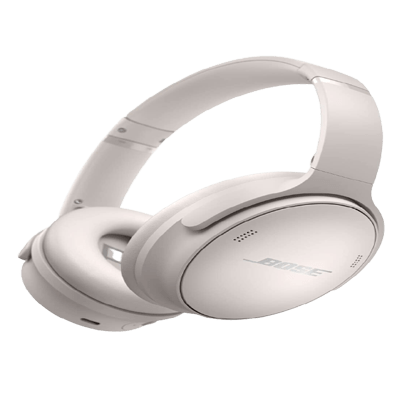
Pros
Reasons to Avoid
The Bose QuietComfort 45 headphones dominate the market with the most significant active noise cancellation available, even though the competition is more fierce than ever. With its QuietComfort brand of noise-canceling headphones setting the standard for the industry for more than 20 years, Bose has long controlled the market.
With the AirPods Max and the WH-1000XM4, which both provide excellent active noise cancellation (ANC) and perhaps higher audio quality, Apple and Sony have recently given Bose a run. With the outstanding Noise Cancelling Headphones 700, which provides ANC you can customize to your preferences, Bose is competing against itself.
The QuietComfort 45, the brand’s most recent QC headphones, now have more enormous stakes than ever. The models above are more suited to audiophiles, but the sound quality is still excellent and matches the price.
The Bose Music app for Android and iOS enables simple connection, and the headphones are Bluetooth 5.1 compatible with support for both AAC and SBC codecs. Without you having to access the Bluetooth settings, turn on the headphones, launch the app, and the headphones will automatically pair with your smartphone.
The QuietComfort 45 headphones provide the most significant active noise cancellation we’ve tested, to put it simply. It is simple to turn down the deep, low-frequency rumbling, similar to what you may hear in an airliner.
However, noise-canceling technology makes this simple. Similar excellent dampening occurs when loud music with a deep bass, bright guitars, and percussion is played over the near-field monitors. The ANC doesn’t eliminate these loud noises, but it’s unlikely that any noise-canceling circuitry can.
These couples all offer something unique and should be given some thought. The QuietComfort 45 headphones, which are our Editor’s Choice winner for noise cancellation that is among the finest in its class, are the ones to buy if the greatest ANC is what you’re looking for.
Also Read: Best Headphones for Doom Metal
Conclusion
We have given you the best guide about the best headphones that don’t leak sound. Select the appropriate headphones made of Over-Ear and Close-Back headphones to avoid the occasionally irritating sound leaking. To prevent noise from spreading outside, see whether the headphones include a Sounds-Isolation function that blocks all outside noise.
Be aware that sure ANC-equipped headphones won’t reproduce the music’s natural flow. More realistic tones are provided by headphones that leak sound. This heavily relies on the type of headphones you own. If you want to wear them for an extended period, don’t skimp on comfort to prevent ear pain. Although the sound leaking is not as awful as it first appears, you now know what to check for if you want some privacy.
